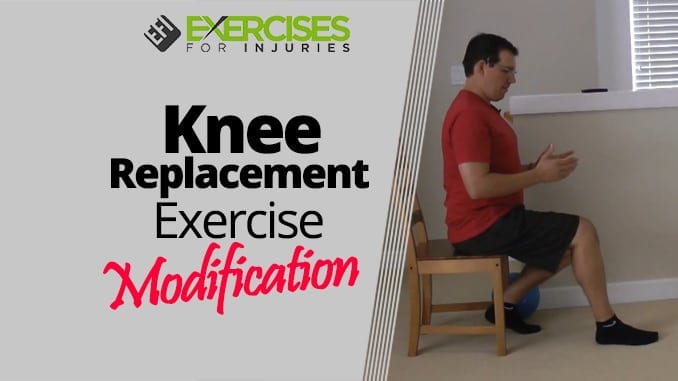
Today, I wanted to reply to a question I got on the blog.
Here’s what Deborah asked of me:
Rick, what is happening in the video demo with the other leg? It appears to me that you have to over-flex the other knee while rolling forward and back. I won’t be able to do this with my clients who have knee pathology because it requires too much flexion of the other knee. Generally, both knees are problematic. Can you explain why you show it this way?
Thank you very much, Deborah, for the question.
The exercise we are talking about is, I have my client sitting, and let’s say that this is the knee that has been replaced in the knee replacement. I was getting them to lean forward and increase that flexion of the knee so I could bring it back and then get them to lean forward and increase that knee flexion.
Deborah’s comment was, this is how I usually end up having the knee. I end up doing the exercise this way because often when it relates to knee replacements, one knee is replaced at a time as opposed to both. So they replaced one and saw how it went, ending up replacing the second.
Usually, the other knee is the good knee and ends up having better flexion in that knee. If this opposite knee is problematic, there are two options that I would recommend.
Modified Exercise for Knee Replacement
If both of the knees are problematic, I can go from a straight position and can bring in a ball.
I can also move that ball closer to me to make it more challenging, so bringing it back, working on that flexion, and then straightening it out. Pulling that heel back and working on that flexion. And this opposite knee, the other knee, is more in a straight position.
I have them both straight with good alignment of the leg. Straightening and coming back up, I can keep the other leg straight as much as possible. Pulling that heel back to the comfortable point that is the pain-free point.
To make it more challenging. I can bring the ball closer and pull it towards me and get more flexion in that knee.
Now, if that ends up being too much of an issue or they can’t do it, the next option that I can do is I can move to a bed. I recommend they get on the bed; it’s much easier to get on and off the bed than on and off the floor.
Once again, I am going to use that ball, my legs are straight, and I can put my hands where I want, and I am getting them to pull that heel towards the seat and straighten out. Again, pull that heel towards the seat and straighten out.
Now, this left knee I can keep wherever I want, whatever is a comfortable position. It could be slightly bent or perfectly straight. I can put a pillow underneath it for support. I am making the exercise more challenging by moving the ball closer to my seat. Then I brought the heel towards the seat, straightened out, and worked towards that flexion.
Final Word
So there you go; thank you very much, Deborah, for the question. I hope that helps out and explains why I chose that exercise. And why I do that exercise and give you two options that you can recommend. Or give it to your clients, or you can do it yourself when it comes to a knee replacement exercise.
If you watch this on YouTube, head above and subscribe. And what that will do is you will get a video from me every couple of days. Where we kind of talk about injuries, pain, and exercise.
Suppose you are looking for a pain-relieving program to help you overcome your knee replacement pain. Check out the Knee Replacement Handbook program that I use. You can get the Knee Replacement Handbook over at KneeReplacementHandbook.com.
Take care and bye-bye.
Rick Kaselj, MS







